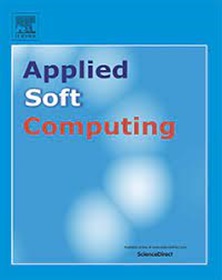纹理感知的三维高斯飞溅稀疏视图重建
IF 7.2
1区 计算机科学
Q1 COMPUTER SCIENCE, ARTIFICIAL INTELLIGENCE
引用次数: 0
摘要
近年来,三维高斯飞溅(3DGS)技术在新视点合成(NVS)中取得了较高的渲染质量。然而,随着输入视图数量的减少,由于约束不足,3DGS无法恢复捕获的3D场景的细节。我们发现高斯基元难以集中在纹理丰富的区域导致这种重建退化。为此,我们提出了一种用于稀疏视图NVS任务的纹理感知框架TA-GS。具体来说,TA-GS引入了一种基于纹理的高斯迁移策略,该策略检测低透明度高斯原语并将其迁移到纹理丰富的区域,从而提高了纹理表示的保真度。此外,我们利用深度图的纹理,并引入深度纹理对齐方法来约束几何结构。为了防止对稀疏输入视图的过拟合,TA-GS采用幻影视图正则化来丰富来自其他幻影视图的纹理信息。大量的实验表明,我们的方法在各种数据集上优于以前的方法,包括LLFF, Mip-NeRF360, DTU和Blender。本文章由计算机程序翻译,如有差异,请以英文原文为准。
Texture-aware 3D Gaussian Splatting for sparse view reconstructions
Recently, 3D Gaussian Splatting (3DGS) has achieved high rendering quality in Novel View Synthesis (NVS). However, as the number of input views decreases, 3DGS fails to recover the details of the captured 3D scene due to insufficient constraints. We find that the difficulty of Gaussian primitives to concentrate on texture-rich areas leads to this reconstruction degradation. To this end, we propose TA-GS, a texture-aware framework for sparse-view NVS tasks. Specifically, TA-GS introduces a Texture-Based Gaussian Migration strategy, which detects low-opacity Gaussian primitives and migrates them to texture-rich regions, improving the fidelity of texture representation. Additionally, we utilize the texture of depth maps and introduce a Depth Texture Alignment method to constrain the geometric structures. To prevent overfitting to sparse input views, TA-GS employs Phantom View Regularization to enrich texture information from additional phantom views. Extensive experiments demonstrate that our approach outperforms previous methods across a variety of datasets, including LLFF, Mip-NeRF360, DTU, and Blender.
求助全文
通过发布文献求助,成功后即可免费获取论文全文。
去求助
来源期刊

Applied Soft Computing
工程技术-计算机:跨学科应用
CiteScore
15.80
自引率
6.90%
发文量
874
审稿时长
10.9 months
期刊介绍:
Applied Soft Computing is an international journal promoting an integrated view of soft computing to solve real life problems.The focus is to publish the highest quality research in application and convergence of the areas of Fuzzy Logic, Neural Networks, Evolutionary Computing, Rough Sets and other similar techniques to address real world complexities.
Applied Soft Computing is a rolling publication: articles are published as soon as the editor-in-chief has accepted them. Therefore, the web site will continuously be updated with new articles and the publication time will be short.
 求助内容:
求助内容: 应助结果提醒方式:
应助结果提醒方式:


